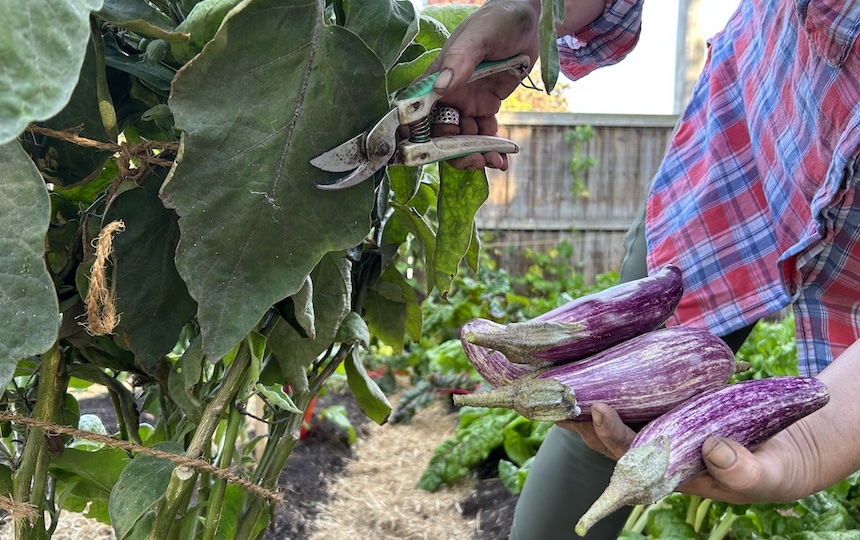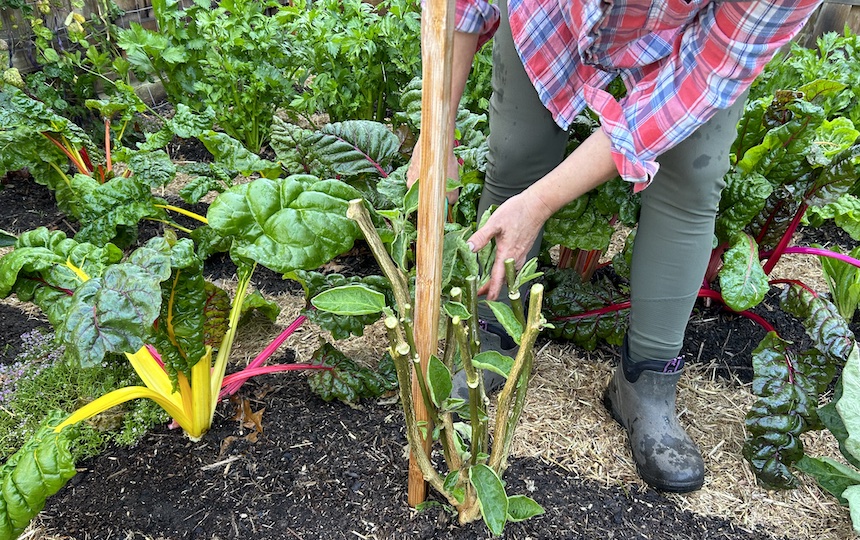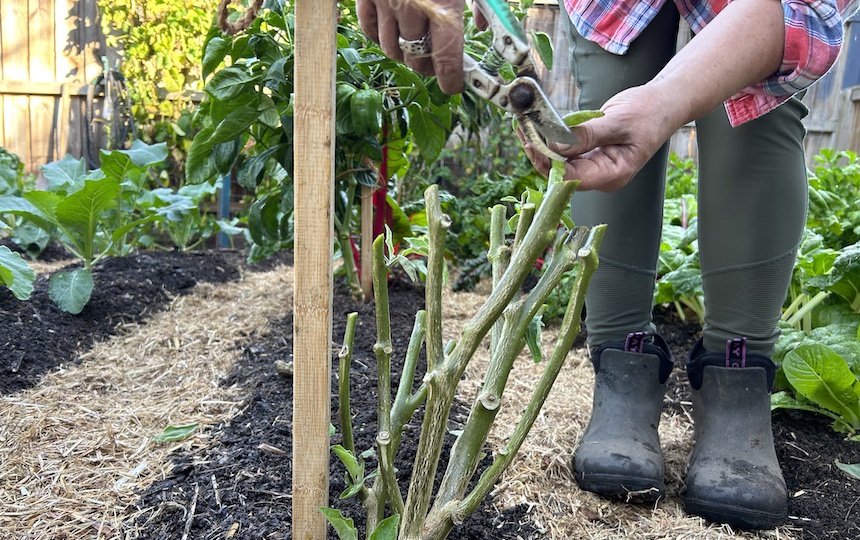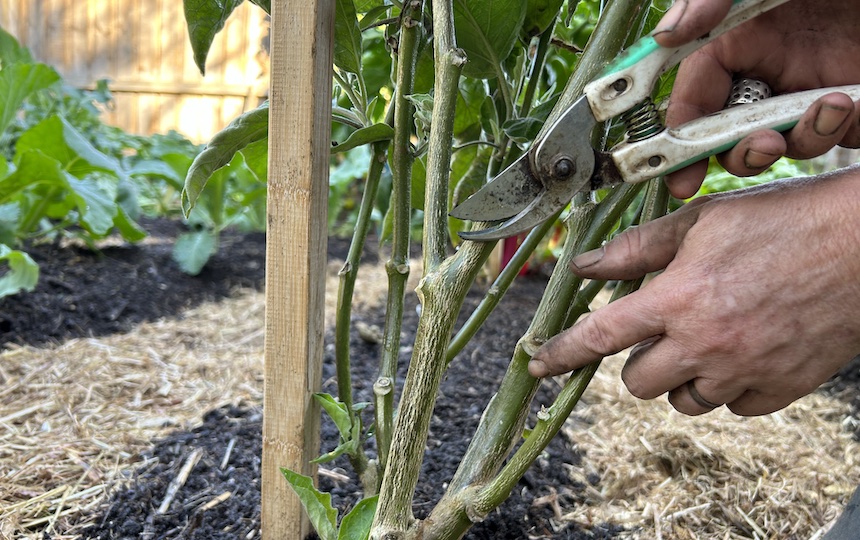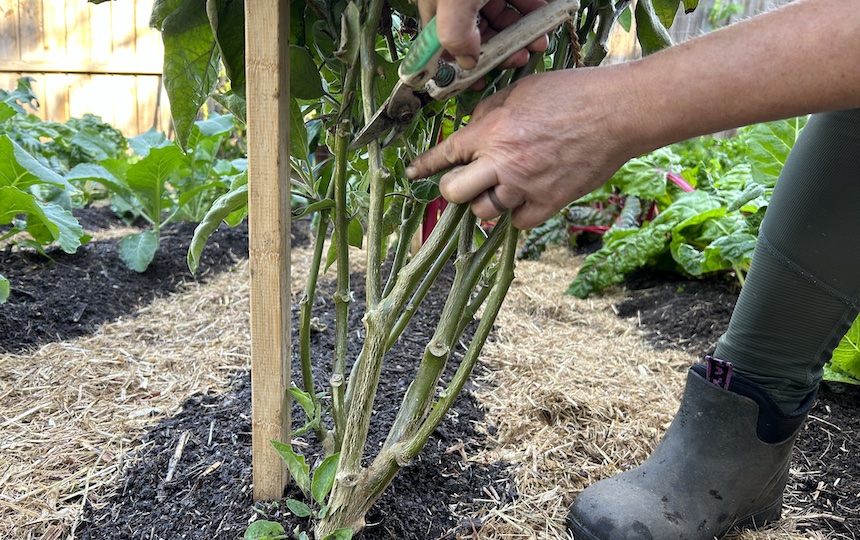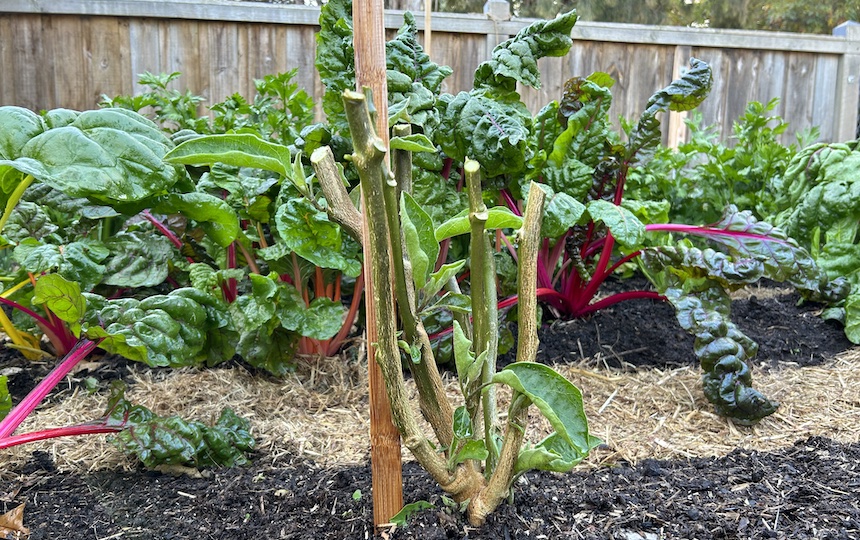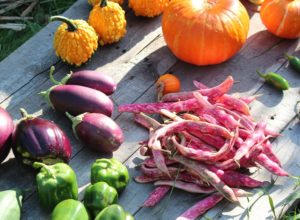Protect your top producing vegies and get a jump on the new season by overwintering plants.
If you can’t bear to pull out that productive chilli, eggplant, capsicum, tomatillo or even tomato plant that has produced well over summer, you can help a plant survive the cooler months by overwintering it and get a jump on the new season.
A little-known fact is that many plants in the nightshade family can in fact be semi-perennial, meaning they can continue to grow for more than one year, and with a bit of TLC, these plants can even continue to grow for a few seasons.
The way you can tell is if your plant starts to lignify, meaning its stem begins to go “woody” and rigid as it ages. If so, the chances of them surviving through the colder months and reshooting in spring can be quite high.
A hard prune
Now you have enjoyed all the produce from your plant, it’s time to prepare them for overwintering by reducing their size and removing excess foliage. By reducing the overwintering plant by over half its size, you are reducing the stress on it caused by trying to produce foliage in cold weather.
Reducing the plant size by removing the majority of leaves and thin stalks, as well as immature fruits and flowers, will take away the need for your plant to waste energy, placing it in a type of forced dormancy. In addition, by reducing the size of the plant, the root to plant ratio is greater and will help the plant to produce new foliage come spring.
To begin, start with a pair of sharp and sterilised secateurs and reduce the plant size by over half, pruning to just above an outwards-facing node or bud. These can be identified as a bump on the stem or where new shoots are sprouting from.
Next, remove any thin green shoots facing inwards as these will cause congestion and reduce airflow around your plant, which could harbour disease and reduce the chance of your plant’s survival.
Cut off any large leaves but allow some young outward-facing shoots to remain. These may still die off later through winter but will still help the plant photosynthesise. Mulch the plant well but keep an eye out for too much moisture around the base of the plant as it may cause it to rot.
Pot up or leave in the ground?
If your overwintering plant is going to be in the way and you have a nice, sunny spot inside, digging it up and re-potting is a great idea. Just prune back your plant as you would if you were leaving in the ground and try to remove the plant with as much of the root ball intact.
Place into a good-sized pot with a high-quality potting mix and water in well with a seaweed extract or worm wee to reduce transplant shock.
You may find that your plant will start to produce new foliage due to its new warm and sunny position, which is fine, but remember to reacclimatise your plant back to the outside world towards the end of winter or early spring by placing the pot outside during the day, before bringing it back indoors at night. Do this for a week or two before planting it back in the ground for summer.
You can leave it in the pot indefinitely, but soil is always going to be better than potting mix. If you have the space to leave your pruned-back plant in the ground and can offer some frost protection in the very depths of winter, it’ll mean you’re not disturbing the roots.
Overwintering plants is always worth a shot
For a variety of reasons, you will find that some plants or varieties won’t survive the overwintering process, but it’s absolutely worth giving it a go. The benefit of successfully overwintering plants is getting a jump on the new season with an already established plant that you know will produce well. And whatever the outcome, it’s a great learning experience. Give it a go!

